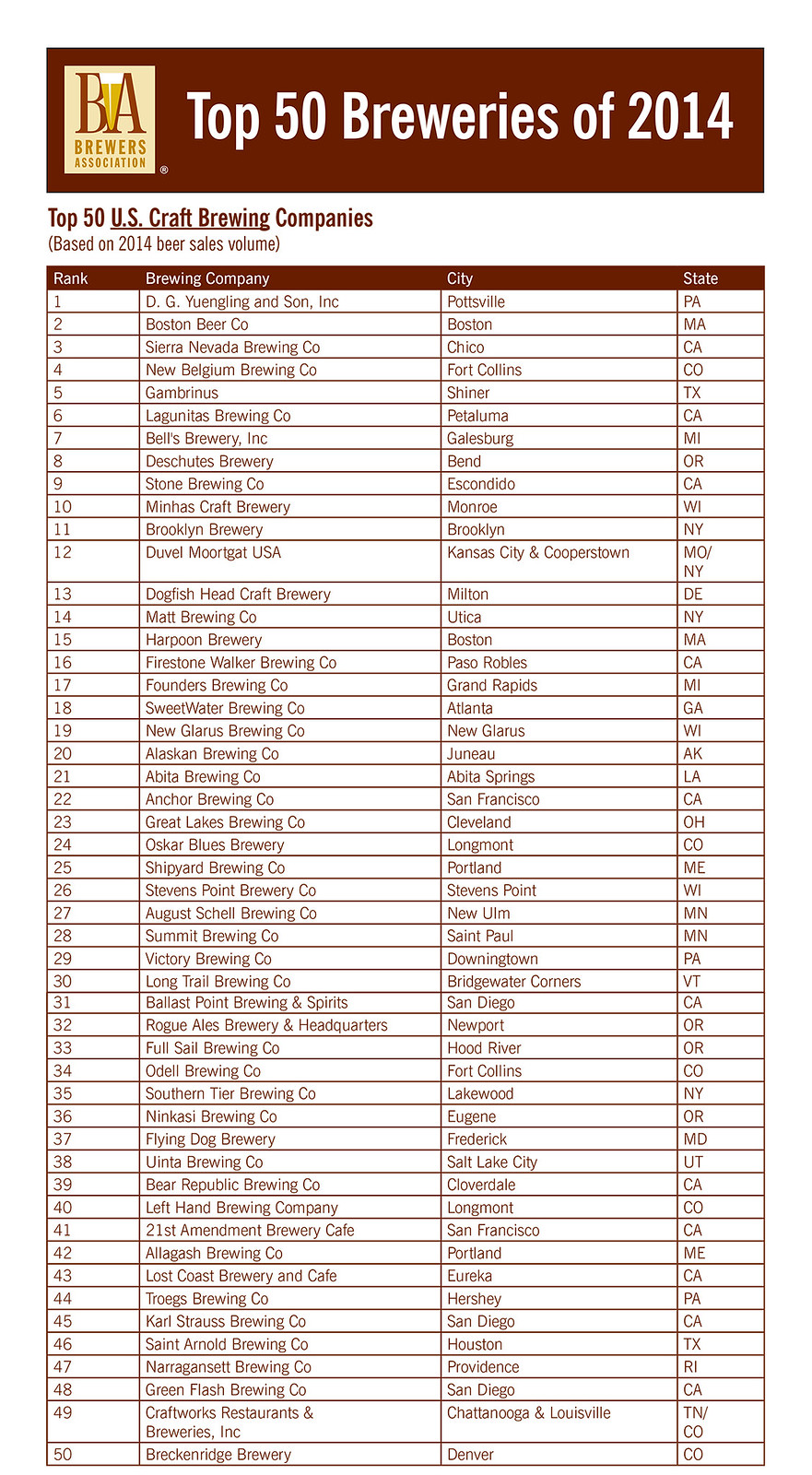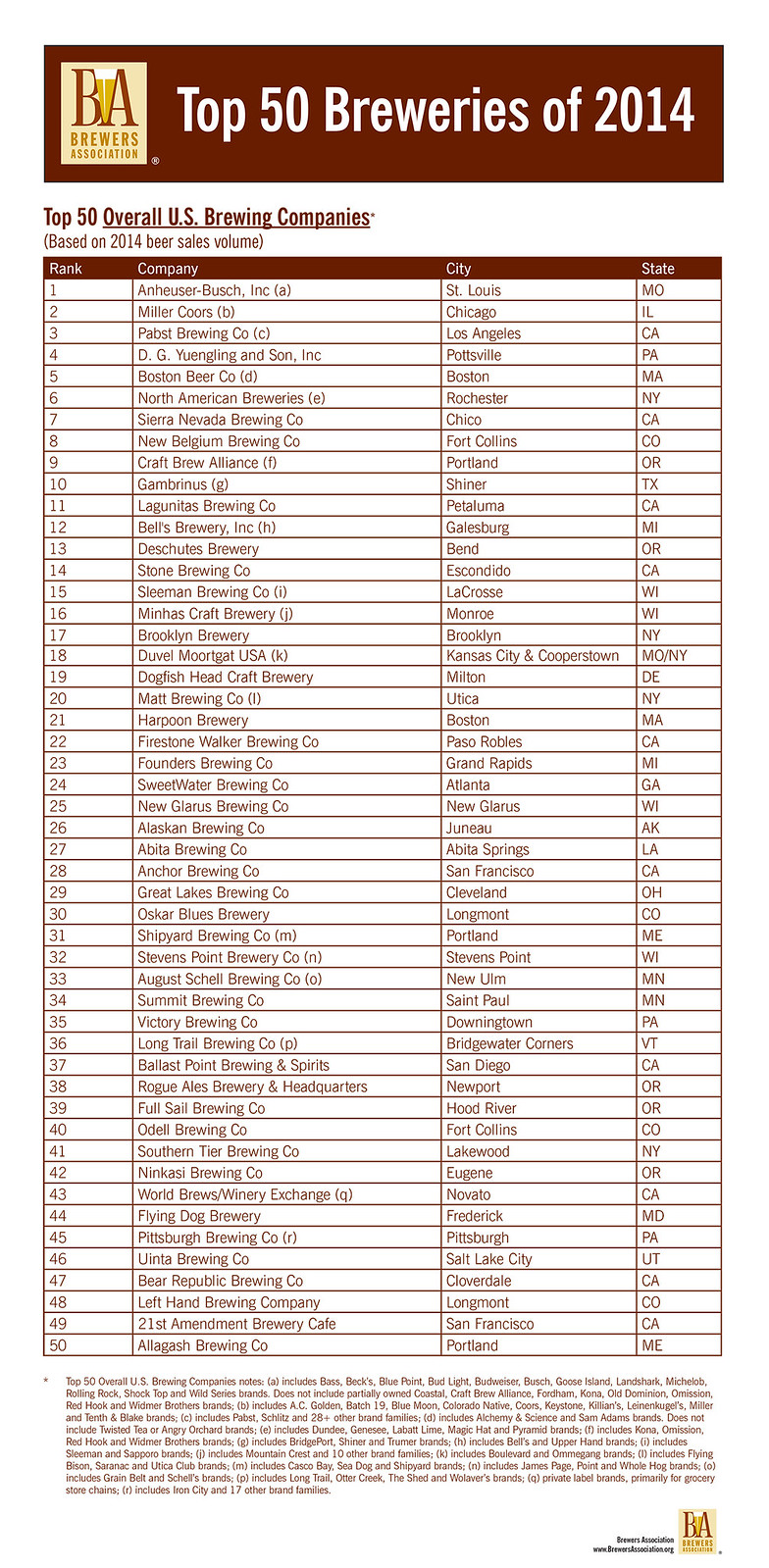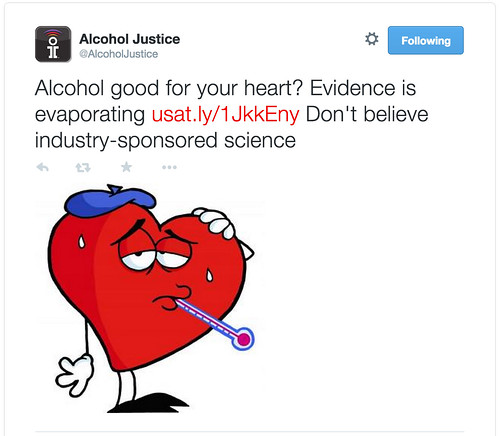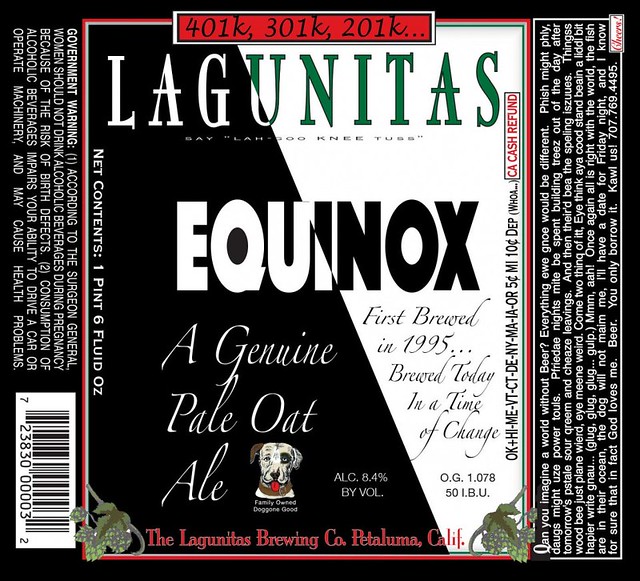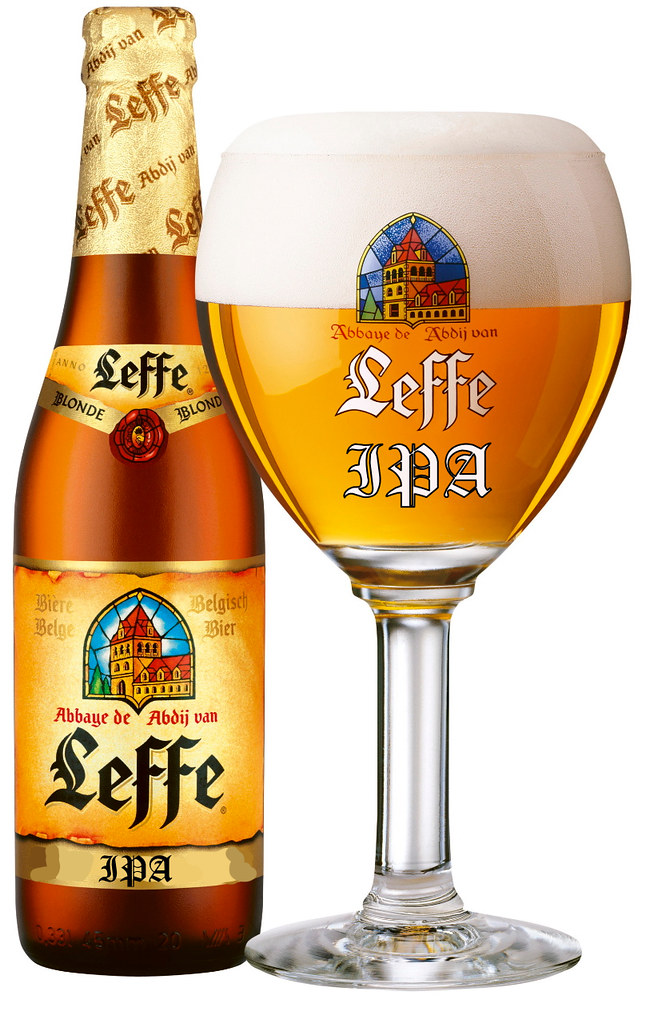![]()
This is my eighth annual annotated list of the Top 50, skipping last year because the BA provided that information then, so here again you can see who moved up and down, who was new to the list and who dropped off. So here is this year’s list again annotated with how they changed compared to last year.
- Anheuser-Busch InBev; #1 nine years, no surprise
- MillerCoors; ditto for #2
- Pabst Brewing; ditto for #3
- D. G. Yuengling and Son; Same as last year
- Boston Beer Co.; Same as last year
- North American Breweries; 5th year on the list, same position as last year
- Sierra Nevada Brewing; Same as last year
- New Belgium Brewing; Same as last year
- Craft Brewers Alliance; Same as last year
- Gambrinus Company; Same as last year
- Lagunitas Brewing; Same as last year
- Bell’s Brewery; Up 1 from #13 last year
- Deschutes Brewery; Down 1 from #12 last year
- Stone Brewing; Up 3 from #17 last year
- Sleeman Brewing; Not in Top 50 last year
- Minhas Craft Brewery; Down 1 from #15 last year
- Brooklyn Brewery; Down 1 from #26 last year
- Duvel Moortgat USA (Boulevard Brewing/Ommegang); Down 4 from #14 last year
- Dogfish Head Craft Brewery; Up 1 from #20 last year
- Matt Brewing; Down 2 from #18 last year
- Harpoon Brewery; Down 2 from #19 last year
- Firestone Walker Brewing; Up 1 from #23 last year
- Founders Brewing; Jumped Up 12 from #35 last year
- SweetWater Brewing; Up 2 from #26 last year
- New Glarus Brewing; Same as last year
- Alaskan Brewing; Down 2 from #24 last year
- Abita Brewing; Down 5 from #22 last year
- Anchor Brewing; Up 1 from #29 last year
- Great Lakes Brewing; Down 2 from #27 last year
- Oskar Blues Brewing; Up 3 from #33
- Shipyard Brewing; Down 10 from #21 last year
- Stevens Point Brewery; Up 13 from #45 last year
- August Schell Brewing; Down 5 from #33 last year
- Summit Brewing; Down 2 from #32 last year
- Victory Brewing; Down 2 from #37 last year
- Long Trail Brewing; Down 5 from #31 last year
- Ballast Point Brewing & Spirits; Up 1 from #38 last year
- Rogue Ales Brewery; Down 2 from #36 last year
- Full Sail Brewing; Down 5 from #34 last year
- Odell Brewing; Up 4 from #44 last year
- Southern Tier Brewing; Down 1 from #40 last year
- Ninkasi Brewing; Down 3 from #39 last year
- World Brew/Winery Exchange; Down 13 from #30 last year
- Flying Dog Brewery; Down 1 from #43 last year
- Pittsburgh Brewing (fka Iron City); Down 2 from #47 last year
- Uinta Brewing; Not in Top 50 last year
- Bear Republic Brewing; Down 1 from #46 last year
- Left Hand Brewing; Up 2 from #50 last year
- 21st Amendment Brewery; Not in Top 50 last year, though they were on the list in 2012
- Allagash Brewing; Not in Top 50 last year
Not too much movement this year, except for a few small shufflings. Only four new breweries made the list; Sleeman Brewing, Uinta Brewing, 21st Amendment Brewery and Allagash Brewing.
Off the list was Blue Point Brewing, Cold Spring Brewing, CraftWorks Breweries & Restaurants (Gordon Biersch/Rock Bottom), Karl Strauss Breweries, Lost Coast Brewery, and Mendocino Brewing.
If you want to see the previous annotated lists for comparison, here is 2013, 2012, 2011, 2010, 2009, 2008, 2007 and 2006.

